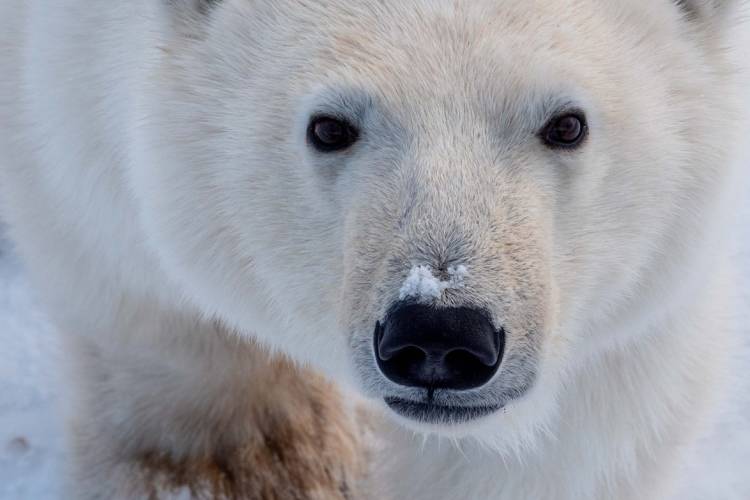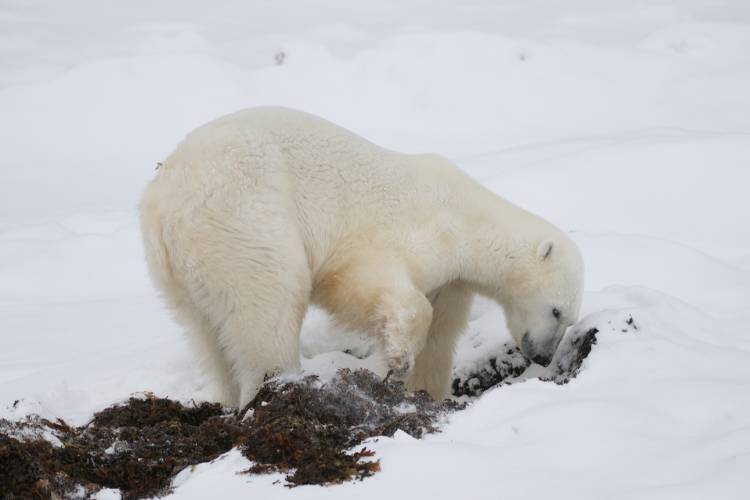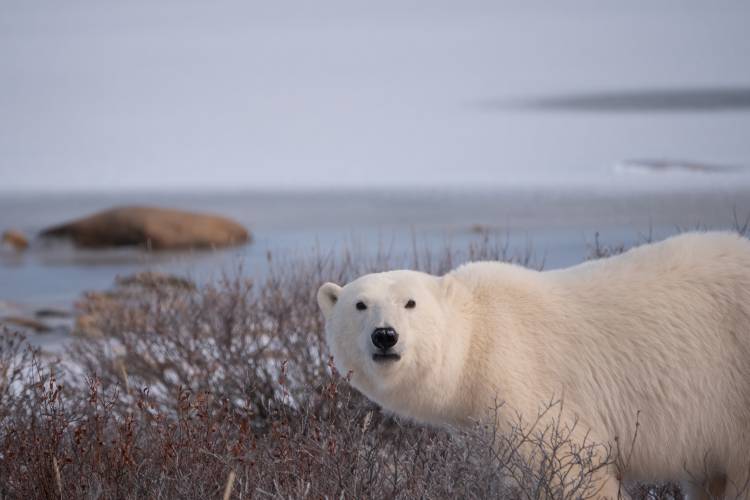"There are 19 populations across the Arctic with 19 different stories, but the worldwide average is not increasing. Some populations have experienced steep declines while others have rebounded a little after their numbers were vastly reduced by hunting, but that increase is likely to be reversed as the sea ice melts."
One of the most frequent myths we hear about polar bears is that their numbers are increasing and have, in fact, more than doubled over the past thirty years. Tales about how many polar bears there used to be (with claims as low as 5,000 in the 1960s) are undocumented, but cited over and over again.*
One Russian extrapolation presented in 1956 suggested a number of 5,000 to 8,000, but that figure was never accepted by scientists. The fact is that in the 1960s we had no idea how many polar bears there were. Even now, some of our population estimates are only educated guesses, especially in Russia. Back then, the best we had over most of the polar bear's range were uneducated guesses. Polar bear science has come a long way since then.
We do know that some polar bear populations grew after quotas were imposed in Canada, aerial hunting ceased in Alaska, and commercial trapping and hunting was banned across the Arctic. All of these events occurred in the late 1960s or early 1970s, and we know some populations responded—as you would expect. Some populations were not being hunted back then (or were hunted very little) and those were probably unaffected by these actions.
Across recent history, the sea ice was generally stable, thick and not noticeably in retreat. With stable habitat, polar bears were a renewable resource that could be harvested on a sustainable basis.
However, what happened in the past is increasingly irrelevant. Polar bear habitat is disappearing due to global warming at a rate that has never been seen before. Even the most careful on-the-ground management will ultimately fail if polar bears don't have the required habitat.
Polar bears depend on the sea ice surface to efficiently catch their seal prey. A shorter duration of ice cover over their productive hunting areas means less opportunity to hunt. A reduction in sea ice has been statistically linked to reduced stature and weight in polar bears and to lower survival rates of cubs. So, it doesn't really matter that hunting is now largely under control or that we know a lot about other impacts people might have on bears. Without habitat, polar bears will disappear no matter what else we do.
If a farmer has 100 cows out in a pasture, and every year he goes out and paves over some of his pasture, pretty soon he won't have enough habitat to support 100 cows. And, each time he paves over a little more land, his remaining land will hold fewer cattle. There may be some short-term enhancements of the remaining habitat that will forestall the inevitable. But, when his whole pasture is paved there will be no cows.
Declining habitat now and the assurance it will decline in the future is why polar bears were listed as a threatened species. Discussions about how many bears may have lived in the past before and after hunting quotas have little bearing on the current situation.
Planetary physics requires the world to warm as greenhouse gas concentrations rise, so without greenhouse gas mitigation, the ice will continue to melt. For an animal dependent on sea ice to survive, the prospects are not good. As the ice decline continues, the plight of the polar bear can only worsen.
* For a fascinating look at where this widely repeated myth comes from, read "Magic Number: A sketchy 'fact' about polar bears keeps going … and going .. and going" by Peter Dykstra, published in the Society of Environmental Journalists' SEJournal.















